Here on the coast nothing is ever the same.
I have many routes that I regularly walk. Some I do more frequently than others and my favourites may be done once or twice a week. At a glance the landscape doesn’t seem to alter, but as the months go by seasonal change brings different light, colour and weather. Year on year the birds that fly overhead come and go and the plants that bloom at the side of the paths grow and die back. Twice a day the tides ebb and flow and move the shifting sands up and down the beach.
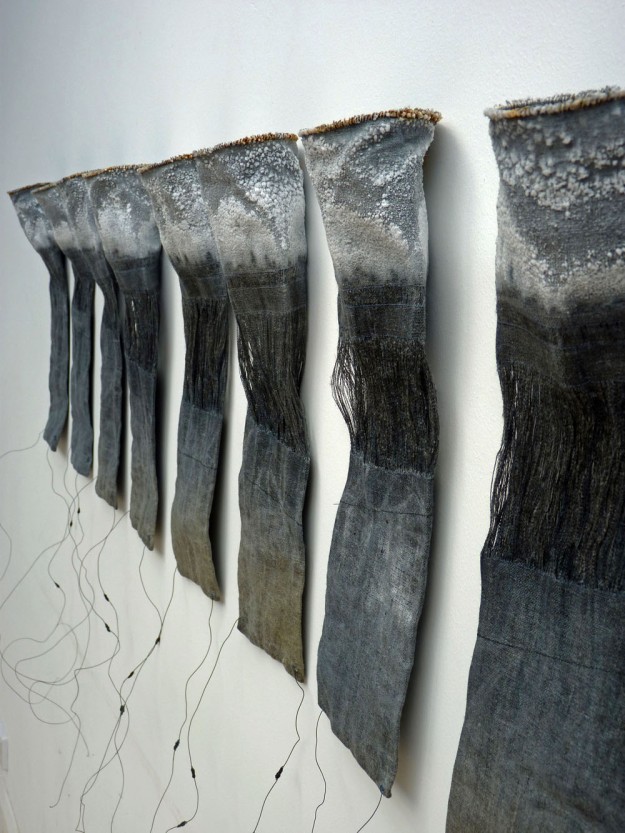
9 Hanging Salts Pots – 2 years ago
Yesterday I walked at Burnham Overy Staithe. This is one of my favourite walks (at least once a week) as it is always varied and interesting. On this occasion the tide was coming in. There was a brisk northerly wind and a few sailing boats were tacking against it up the creek to wider waters. The sun was warm on my back but high cumulus clouds were threatening rain inland.
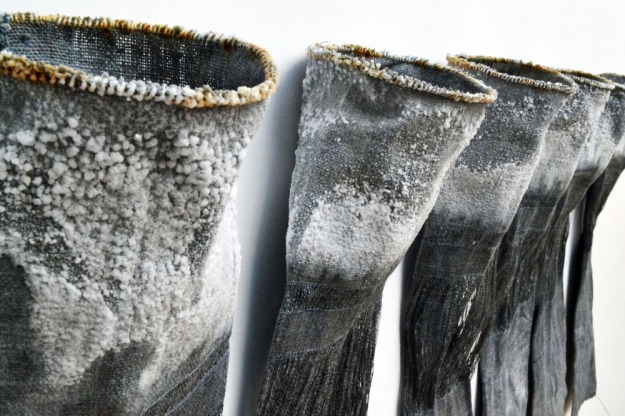 9 Hanging Salts Pots – 2 years ago
9 Hanging Salts Pots – 2 years ago
At the end of the raised dyke I turned left to walk along the side of the marsh round the spit of land called Gun Hill. Something had changed – the large, floating and rather ugly, grey shipping container that had, surprisingly, sat on the edge of the marsh, (I think it may have been an artist’s studio) had been taken away. This was a blow as the low, wooden slatted shelves built into its side have provided a place to sit, drink coffee and draw many times in the past. Last time I was there the wooden slats had been prised up; pulled violently away from the container I thought it had been the fault of vandals, but maybe it was time for this temporary shelter to move on.
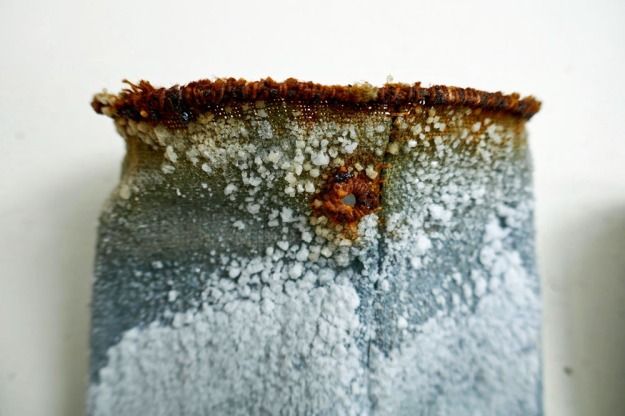 9 Hanging Salts Pots (detail) – today
9 Hanging Salts Pots (detail) – today
Round on the beach a large flock of birds was flying low over the sea edge. Skimming the water, they curved round and landed on the shingle just in front of me. They were well camouflaged by the grey, white and black pebbles but through the binoculars I could see that they were a huge flock of little ringed plovers. I’ve never seen so many together – there were perhaps fifty or sixty birds hopping around. Suddenly another flock flew in and landed beside them. They were sanderling: another, slightly smaller flock of small grey/white birds. I stood and watched them until a passing dog ran towards them and up they rose to land, in safety, further along the beach.
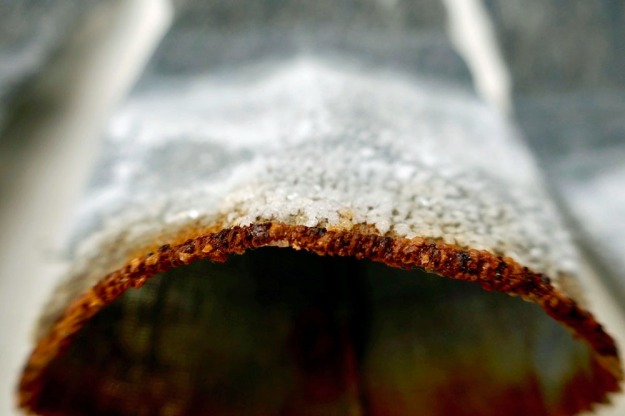 9 Hanging Salts Pots (detail) – today
9 Hanging Salts Pots (detail) – today
With the large spring tides we have been having recently, a result of the autumn equinox, I noticed another change in the landscape. The force of the incoming water had pushed the sand up the beach into undulating, shelved ridges. I don’t suppose it will be long before the wind blows it all back down the beach and flattens its surface out again.
 9 Hanging Salts Pots (detail) – today
9 Hanging Salts Pots (detail) – today
When I make work, I always have this mutable environment in my mind. I aim to evoke the shifting landscape and the consequential implied passing of time in the processes and materials that I use. Salt is one of the materials I use to suggest this as the cyclical transformation of the material from to solid to liquid back to solid is a transformative, time-based process.
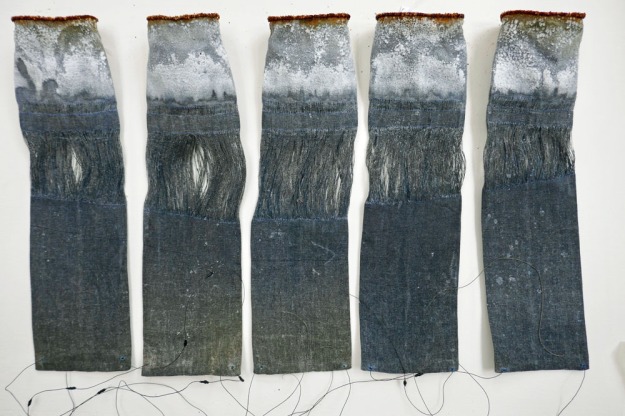 9 Hanging Salts Pots (detail) – today
9 Hanging Salts Pots (detail) – today
A couple of weeks ago I had reason to look at one of my saltworks, 9 Hanging Salt Pots, that had been packed away for a couple of years. As I took it out of the packaging I was initially shocked to see how much the work had deteriorated. I am, of course, aware that salt is corrosive, but other works have not corroded and broken down in quite the same way as this work. The iron wire that I use to stiffen the rim of the works had completely rusted through – eaten away over time by the continuing action of the salt that surrounds it, so that the eyelets were broken in several places. The cloth was still intact, but the areas coloured by the rust were thinner and beginning to rot. I feel as if it is just a matter of time before the cloth also breaks down.
 9 Hanging Salts Pots (detail) – today
9 Hanging Salts Pots (detail) – today
My first reaction was ‘on no!’. But on reflection this action has to be a good thing. I want my work to appear weather-worn and to look as if it has had a previous life. What better way is there to achieve this than for the materials I use to actually do their job and to break down the works over time? This is a lesson to be learned and I will definitely exploit it in the future. The only problem is that I might have to put it away in a box for two years!

I love your hanging salt pots – the colours, textures and corrosion are just beautiful…. !
Always a pleasure to read your posts – like being with you on your walks.
I love the changes in shade…sometimes ‘happy accidents’ can be the best thing! I hope you will show them again so we can follow their progress too. Fascinating.
Why should archival work be the goal? The temporal nature of work can be part of its appeal.
I actually prefer the latest version…
I do think the pots are stunning,The original version makes me think of a cold winters day on the sea, muted colours and just enough wind to stir the sea.While the new version is still winter but the wind has strengthen and the earth and the sea are mixing together violently.
Your hanging salt pots look exceptional!
It’s always so delightful to see your artistic pictures and to read your observations. Although English isn’t my mother language – as you may have noticed 🙂 – I enjoy your style.
I’m sure I’m not alone in seeing beauty in decay – to me the pristine, neat and precise is dull. I love the drama of these pieces and, if they were mine, I would enjoy the changing nature of the work over time – how much more interesting that work which never changes!
I agree wih chyfey, the pieces look even more beautiful in their present condition. I was lucky enough to catch your exhibition in Cranleigh the other day, it was such a treat to see your work on show.